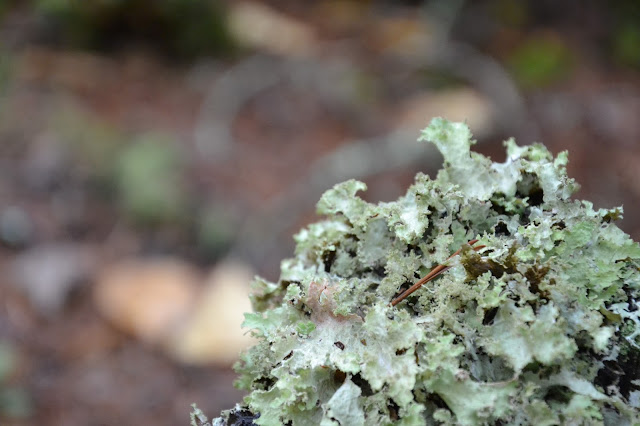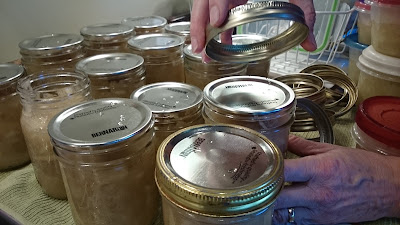Hello out there!
So this one is about a little adventure to Syphon Falls and a little about "Canning" which is something that we Australians don't have to worry about due to the mild winters.
Canadians on the other hand have Canning down to an art.
Canadians on the other hand have Canning down to an art.
As you can see this is not to far from the centre of town. It is a fairly short walk but it is only a partially developed track, and was a bit of a hike.
There were a lot of beautiful things along the way so here are some photos of them!
This first one Kyran named King Lichen ("Li-king") as it was atop a stump and very bushy
So this is what we set out to see - the Syphon falls in all it glory!
The photos above were taken from half way up the falls. The pool that you see in the photos was half way up but in order to see the pool I had to climb up the side of the falls with a camera in one hand and a rope in the other. I think Kyran just missed videoing me falling and trying to not to slide the whole way down the bottom.
The photo below is a photo of Kyran videoing me waiting for the opportune moment. This is followed by a photo of Kyran's disapproval of me climbing the water fall.
A nice looking cliff face!


So any normal person would have gone to the falls and then turned around and went back.
Well I saw a rockslide area and a clearing at the top and decided that we should explore that and see what is at the top... also much to Kyrans disapproval.
Not Impressed! Haha.
Well in any case, here are some more pictures
This is a fun side note: The photo above in Kyran's hand is Muscovite and we saw it every where in this rock slide area.
Scrap, flake and ground muscovite are used as fillers and extenders in a variety of paints, surface treatments and manufactured products. The pearlescent luster of muscovite makes it an important ingredient that adds "glitter" to paints, ceramic glazes and cosmetics.
For more information about this mineral see:
http://geology.com/minerals/muscovite.shtml
This picture is of what we assume is a birch tree that have a ring of a different type of texture, possibly from damage of some kind (fire??).
[Kyran]
Here is a magnificent view from up on the hill we hiked up - still only halfway up the mountain, but we stopped here and sat in the dirt to take in the views and feel the wind on our faces. In the distance, all the way up the Shuswap lake, there is a bit of precipitation.
On the way down the hill after a little break up there, we came across a cute little snake! Mercedes picked it up and gave it a cuddle while I took photos of it.
Down the pathway home, here's a nice picture of the thin forest area. The trees are turning yellow! It's now Autumn, officially.
There's a troll on the bridge!! :)
Lastly, as promised, the Apple Sauce!

We picked the apples fresh from Jody's (Kyran's boss's wife) trees and cut them up, worms and all! They were very organic!
We started with two large tubs of apples, and then we peeled and chopped them.

Then we added them to the pot (this is a smaller batch) with a little bit of water to keep them moist.
 Then we added
lemon and sugar or honey (we used honey) to sweeten it - the lemon stops
it going brown. Once they were soft, it was time for the canning.
Then we added
lemon and sugar or honey (we used honey) to sweeten it - the lemon stops
it going brown. Once they were soft, it was time for the canning. Canning consists of bottles with two-part lids. The first part of the lid (as you can see on the left) is a flat top with a seal around the rim. This is soaked in hot/boiling water for a few minutes before using them. I should also mention that the jars themselves have to be sterile because canning has to remain germ-free for a long period of time. The whole process must be sanitary!
Canning consists of bottles with two-part lids. The first part of the lid (as you can see on the left) is a flat top with a seal around the rim. This is soaked in hot/boiling water for a few minutes before using them. I should also mention that the jars themselves have to be sterile because canning has to remain germ-free for a long period of time. The whole process must be sanitary!
The second part of the lid (see left) goes on last. It screws on tight and holds down the top part to keep the seal. Making sure the lids are on tight, the jars are then placed in a large pot and boiled for ten minutes. In this case, the pot seen below is specifically made for this task - it has a rack which allows easy insertion and removal of the jars during the process.
After the ten minutes, the jars are removed but kept on the tray and placed gently to the side to cool down. They are not supposed to be moved for about 12 hours in order for them to cool and the seal to harden.
At the end of the process, just like your vegemite lids you should be able to see the top bit depressed which indicates a full air-tight seal. It's important to mention that when you take them out of the heat, none of them will be depressed, but as they cool you will hear the lids pop and see the top dented in. If after they have cooled the top is not dented, then you know it did not seal so you should probably eat those first as they will not keep long-term (which is the whole point of canning).
After my canning experience (I'm sure I've seen Tia do this in Spain, but I didn't take notice) I asked around the girls at work for examples of how to can other fruits and veggies - turns out for most veggies you do not cook them before canning, you simply add them raw with salt water (brine) or vinegar and then do the boiling process, which cooks them at the same time.
While we were waiting for the jars to boil, Jody showed me her cooking book, and the times that the jars should boil vary with what the contents are. If you are planning to can, please google how long to boil them for... Don't use me as an authority!
That my friends, is canning brought to you from Canada! Sadly, also the end of another blog entry.
The next blog should follow some time in the next couple of weeks, and will cover our adventures in square dancing, Kyran's airsoft shenanigans, wild mushrooms, and moving house!
Stay tuned!


































No comments:
Post a Comment